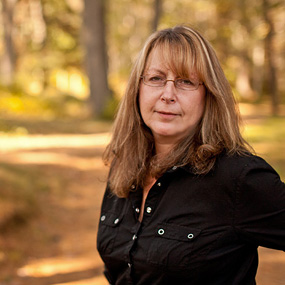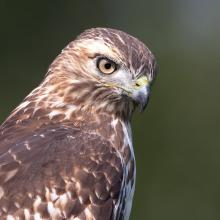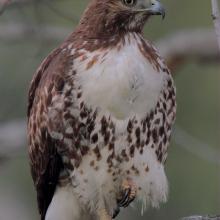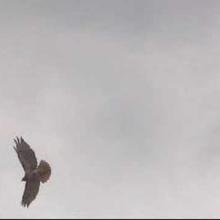

Join BirdNote tomorrow, November 30th!
Illustrator David Sibley and actor H. Jon Benjamin will face off in the bird illustration battle of the century during BirdNote's Year-end Celebration and Auction!
It's April, but Great Horned Owls have been busy at their nests for two months. Golden Eagles are on their nests as early as the beginning of March. And Red-tailed Hawks (like this one) begin early, too. Why do these birds of prey nest so early? It takes a long time to raise a baby hawk or owl to the size at which it can fend for itself. Such large birds grow slowly. By nesting so early, these raptors fledge their young by the time spring arrives.
Support comes from Sasquatch Books, announcing BirdNote, the Book. Full of chirps, quirks, and stories of 100 birds. More at SasquatchBooks.com.
BirdNote®
Raptor Breeding:
The Early Bird Gets the Mouse
Written by Dennis Paulson
This is BirdNote!
[Call of a Great Horned Owl]
It’s April, but Great Horned Owls have been busy at their nests for two months.
Golden Eagles are on their nests as early as the beginning of March. [Golden Eagle call] And Red-tailed Hawks begin to lay eggs early in that same month, as well. [Red-tailed Hawk call] Of the birds familiar to us, most don’t even think about breeding until April. So why do these large birds of prey begin this annual event so early?
[Mouse squeaks and gnawing sounds] Hear that mouse? There’s the answer. It takes a long time to raise a baby hawk or owl to the size at which it can fend for itself. Even though both parents are hunting for and feeding them, such large birds grow slowly. So by beginning to nest early, the hawks and owls fledge their young by the time spring arrives. This is just about the time young rodents and rabbits are leaving their nests in great numbers. [Mouse squeaks in background] The young birds, ‘though inexperienced in catching their own meals, have a lot of potential prey to make their hunting a bit easier and their survival more likely. [Red-tailed Hawk call]
You can get BirdNote as a podcast! Find out how at our website, BirdNote.org. I’m Michael Stein.
###
Bird audio provided by The Macaulay Library at the Cornell Lab of Ornithology, Ithaca, New York. Great Horned owl Duet recorded by W.R. Fish. Red-tailed Hawk and Golden Eagle recorded by L.J. Peyton. Gnawing sounds of Eastern Gray Squirrel by W.L. Hershberger. Sagebrush ambient recorded by G.A. Keller.
Mouse squeak by John Kessler, Kessler Productions.
Producer: John Kessler
Executive Producer: Chris Peterson
© 2015 Tune In to Nature.org April 2017 Narrator: Michael Stein
ID# 040507earlyraptorKPLU earlyraptor-01b-2009-04-28-MS











